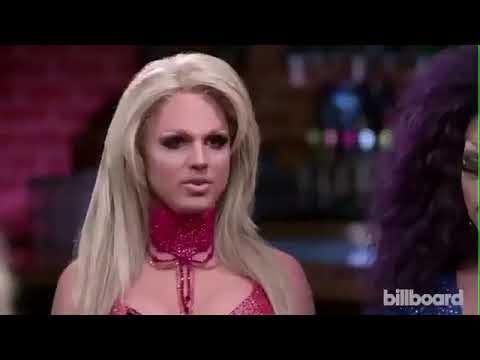If you’re a Queer person on social media, you’ve likely seen the exchange between Drag Race contestants Derrick Barry and Willam Belli during a round table discussion for the web series Spilling the Tea.
In case you haven’t, here’s a refresher.
Barry lamented “when people don’t know what Stonewall is,” prompting host Tamar Braxton to ask the queen to tell viewers about the Riots.
Barry responded:
That was fighting for gay rights, and people were killed.
Willam came in with a terse interjection:
Nobody was killed at Stonewall.
The moment has become Queer meme gold, and Derrick herself laughs at it in retrospect, but is it possible she was right all along?
It can’t be overemphasized that, with the Stonewall Riots, there’s a lot more we don’t know than what we know for certain. What’s largely undisputed is that the organizing that emerged from it completely transformed the Queer rights movement in the United States and around the globe.
What has long been considered a certainty regarding the fatalities—or lack thereof—is also reliably in question. Reports from around the time indicate that one person did, in fact, die during the second night of the Stonewall Riots, though the fatality wasn’t a cop or a rioter.
In a 1970 article commemorating the first anniversary of the Riots in GAY, John Francis Hunter writes:
Then, on Wednesday … a cab was jumped, the driver had a heart attack and later died[.]
John Francis Hunter wasn’t just any reporter. He was an archivist for the early gay rights group Mattachine, as well as one of the organizers of the first Christopher Street Liberation Day March.
Hunter’s credibility on the subject is likely why the cab driver’s death has been cited by Gay historian Eric Marcus of Making Gay History, the NYC LGBT Historic Sites Project, The Gay Militants by Donn Teal (1971) and other in-depth coverage regarding the Riots.
In an article for Come Out! published only six months after the riots, lifelong gay activist and Stonewall rioter Bob Kohler wrote:
I remembered when, only weeks ago, Christopher Street was a battleground, when cries of “Gay Power” and “Kill the Pig” echoed through the square … I remembered Lola Montez, Orphan Annie, Miss New Orleans, and the Cab Driver who had a heart attack when his cab over-turned[.]
In his 2010 book Stonewall: The Riots That Sparked the Revolution, David A. Carter cites both Kohler and fellow eyewitness Craig Rodwell, the founder of Homophile Youth Movement in Neighborhoods (HYMN) and one of the “sip-in” participants at Julius’ Bar.
Carter’s account goes far more in-depth:
While the demonstrators were serious about their intent, an incident with a taxi driver was a warning that they needed to exercise some caution. Unaware of what was happening, a taxicab turned onto Christopher Street from Greenwich Avenue and immediately was caught up in the crowd, the demonstrators not realizing that the challenge to them was unintentional. As the crowd started rocking the taxi back and forth, Rodwell looked in the taxi and saw that both the passengers in the backseat and the cabdriver were terrified, “scared out of their skulls.” It seemed to Rodwell and others that the driver was having a heart attack, so a number of demonstrators joined arms to protect the taxi, and it backed up and out onto Greenwich Avenue. Bob Kohler and Craig Rodwell would later hear that the taxi driver died, apparently the only fatality from the riots.
Where Hunter, Rodwell, and Kohler got intel that the driver died will forever remain a mystery, as will the driver’s identity, but these accounts are yet another reminder that the only certainty regarding Stonewall is the absence of certainty.



